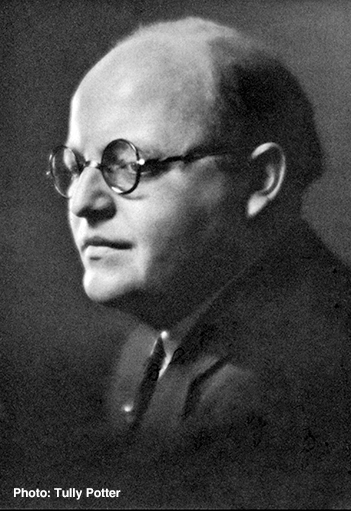Josef Krips
The son of a doctor, Josef Krips first studied the violin, and in addition sang in the choir of the Carmelite Church in Vienna; at a young age he entered the Vienna Academy of Music where he was a pupil of Weingartner and Mandyczewski. He was a violinist in the orchestra of the Vienna Volksoper between 1918 and 1921, when Weingartner promoted him to be a coach and chorusmaster there; and in the same year he made his debut as a conductor, taking over a performance of Verdi’s Un ballo in maschera at short notice, and conducting without a score. Also in 1921 he made his first appearance as a symphonic conductor, at the Redoutensaal in Vienna. Krips served as head of the opera department of the municipal theatre in the Czech city of Usti nad Labem during 1924 and 1925, before moving to the post of conductor at the Dortmund Municipal Theatre for the following season, 1925–1926; and was chief conductor at Karlsruhe between 1926 and 1933 where he conducted both opera and concerts, leading festivals devoted to Bruckner (1929) and to Handel (1930).
At about this time, Krips began to appear internationally. He was appointed as a resident conductor at the Vienna State Opera in 1933 (making his debut there with Johann Strauss’s Der Zigeunerbaron), made his Salzburg debut in 1935, and taught at the Vienna Academy from 1935 to 1938; but following the Anschlüss, the annexation of Austria by National Socialist Germany, he was forced out of these positions. Although he moved to Belgrade where he continued to conduct during 1938 and 1939, he was again compelled, as in Vienna, to give up all professional musical activity through political pressure and spent World War II doing menial work. After the occupation of Vienna by the Allied powers at the end of the war, the Soviet authorities gave Krips the responsibility to reconstruct musical life in the city. He brought the State Opera back to life with many memorable performances at the Theater an der Wien and at the Volksoper, conducted the Vienna Philharmonic and Vienna Symphony Orchestras at the Musikverein, and reopened the Salzburg Festival in 1946 with Mozart’s Don Giovanni. He also conducted the Vienna State Opera on its highly successful visit to London in 1947, and appeared elsewhere with it and the Vienna Philharmonic on tour in Belgium, France, Italy and Switzerland.
Having been appointed chief conductor of the London Symphony Orchestra in 1950, Krips remained with the orchestra until 1954 and did much to rebuild it after the depredations of the war. He succeeded William Steinberg as chief conductor of the Buffalo Philharmonic Orchestra in 1954, and as in London previously, continued Steinberg’s work of making it into one of America’s stronger ensembles. He also took on the conductorship of the Cincinnati May Festival between 1954 and 1960. In 1963 Krips moved from Buffalo to the San Francisco Symphony Orchestra, remaining with this ensemble until 1970, when he was given the title of conductor emeritus. He had made a considerable impact with Don Giovanni at the Royal Opera House, Covent Garden, in 1963, and conducted at the Metropolitan Opera, New York, from 1966; he appeared also with the New York Philharmonic Orchestra for ten weeks during its 1964–1965 season directing a cycle of the Bruckner symphonies. By this time Krips was recognised as one of the most outstanding exponents of the Viennese school of conducting: he returned to Covent Garden in 1971 to lead a beautifully moulded account of Wagner’s Die Meistersinger von Nürnberg and shortly before his death followed this with equally fine readings of Richard Strauss’s Der Rosenkavalier and Beethoven’s Fidelio.
Krips was a splendidly animated conductor: so graphic were his facial expressions and so clear his baton technique that it was impossible to misunderstand his musical intentions. Like his mentor Weingartner, he was a stickler for an exact rendition of the written score, which he constantly interpreted with musicianship of the highest order. He was active in the recording studio from the end of the 1940s onwards, initially conducting operatic accompaniments for Walter Legge and EMI, before being taken up by Decca. He made many fine recordings during his time with the London Symphony Orchestra, and remained with Decca until 1960, recording for the company several of its most highly-rated early stereo recordings, such as Don Giovanni and Tchaikovsky’s Symphony No. 5, both with the Vienna Philharmonic Orchestra, as well as many other successful titles. His cycle of the Beethoven symphonies with the LSO, recorded for Everest in London, remained in the catalogue for many years, as did his numerous accompaniments to concerto recordings by Arthur Rubinstein.
Towards the end of his life Krips recorded several of the later Mozart symphonies with the Amsterdam Concertgebouw Orchestra for Philips: these stand as an eloquent memorial to his great skill as a Mozart conductor, and fully demonstrate why he was such a key figure in the development of the post-war Mozart style. He wittily said, of Mozart conducting, ‘Mozart is, of all composers, the most difficult to conduct, and I can tell you why: two bars and you are suddenly transported to heaven. It’s very hard to keep your bearings when you are there.’ Of the few live recordings of Krips in the opera house, those made during his later years at the Vienna State Opera preserve outstanding examples of his art as a dramatic conductor. They include brilliant realisations of Richard Strauss’s Die ägyptische Helena and Der Rosenkavalier; Smetana’s Dalibor; as well as, perhaps more unexpectedly but no less fine, of two operas by Verdi: La traviata and Simon Boccanegra.
© Naxos Rights International Ltd. — David Patmore (A–Z of Conductors, Naxos 8.558087–90).

















